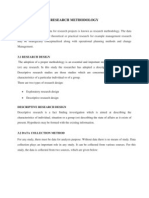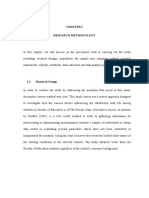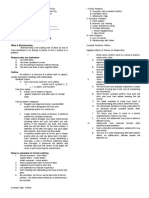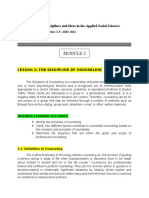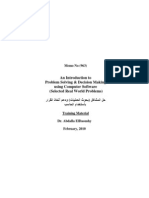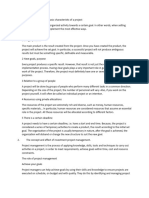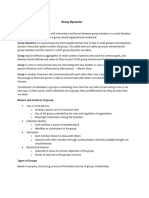100% found this document useful (1 vote)
916 views7 pagesBackground of The Study
This document provides background information on counseling. It defines counseling as guiding individuals through life decisions and transitions with professional advice. Counselors are trained to help clients understand themselves and their problems to discover better solutions. Counseling addresses normal responses to life events and is provided in various contexts like schools, marriages, and health issues. The document also discusses psychometrics used in counseling and distinguishes counseling from psychiatry. It explores peers, culture, neighborhoods and the counseling context itself as important factors in counseling and effective counseling considers the client, counselor, contextual and process factors.
Uploaded by
Mack harry AquinoCopyright
© © All Rights Reserved
We take content rights seriously. If you suspect this is your content, claim it here.
Available Formats
Download as DOCX, PDF, TXT or read online on Scribd
100% found this document useful (1 vote)
916 views7 pagesBackground of The Study
This document provides background information on counseling. It defines counseling as guiding individuals through life decisions and transitions with professional advice. Counselors are trained to help clients understand themselves and their problems to discover better solutions. Counseling addresses normal responses to life events and is provided in various contexts like schools, marriages, and health issues. The document also discusses psychometrics used in counseling and distinguishes counseling from psychiatry. It explores peers, culture, neighborhoods and the counseling context itself as important factors in counseling and effective counseling considers the client, counselor, contextual and process factors.
Uploaded by
Mack harry AquinoCopyright
© © All Rights Reserved
We take content rights seriously. If you suspect this is your content, claim it here.
Available Formats
Download as DOCX, PDF, TXT or read online on Scribd
/ 7






















